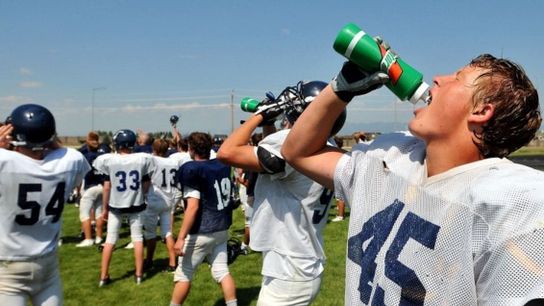Central Michigan University's professor in athletic training Kevin Miller, along with colleagues at South Carolina and the University of Arkansas, are taking a closer look at the sweat of their athletes in an effort to study proper hydration.
Most coaches are also familiar with the dangers of over-hydrating, or hyponatremia, which dilutes the amount of sodium in the blood stream leading to brain swellin,g and death rare cases.
"Hydration is often recommended to prevent muscle cramps in amateur and professional athletes, but my studies show there isn't necessarily a link. In fact, the fear of cramping has caused some athletes to overhydrate, which can be dangerous," Miller shared with CMU News. "I want to help CMU athletes and others avoid tragedy."
Miller and his colleagues sprung into action after learning of several high school athletes that died as a result of over hydrating and are working together to analyze the sweat rate, and the content of their athletes sweat in an effort to be able to educate their players on hydration and give recommendations on their diet.
At CMU, Miller split up athletes into groups of those with a history of muscle cramps, and those without previous history and then weighed those athletes before and after practices to determine how much water they lose during a practice. Interestingly, the results showed that both those with a history of cramps and those with no previous history both lost similar similar amounts of fluid during a practice. Crampers lost just 70 milliliters more per hour than those without a history of cramps.
"These results show that crampers and noncrampers lose similar amounts of fluid during exercise. It is unlikely that these fluid losses would contribute cramping," Miller explained.
Players were also outfitted with patches that allowed Miller and his colleagues to analyze how much sodium, potassium, and chloride were contained in each person's sweat. All the data is being broken down into specific positions so that Miller can eventually tailor the needs of hydrating beyond each individual, and start to look for trends from position to position.
"By understanding how much the average football player sweats in each playing position, I can make beverages tailored to replace the right amount of electrolytes for each player. I can make quarterback juice. I can make linebacker juice."
Head over to CMU News to read the full piece, including more on their early results.
